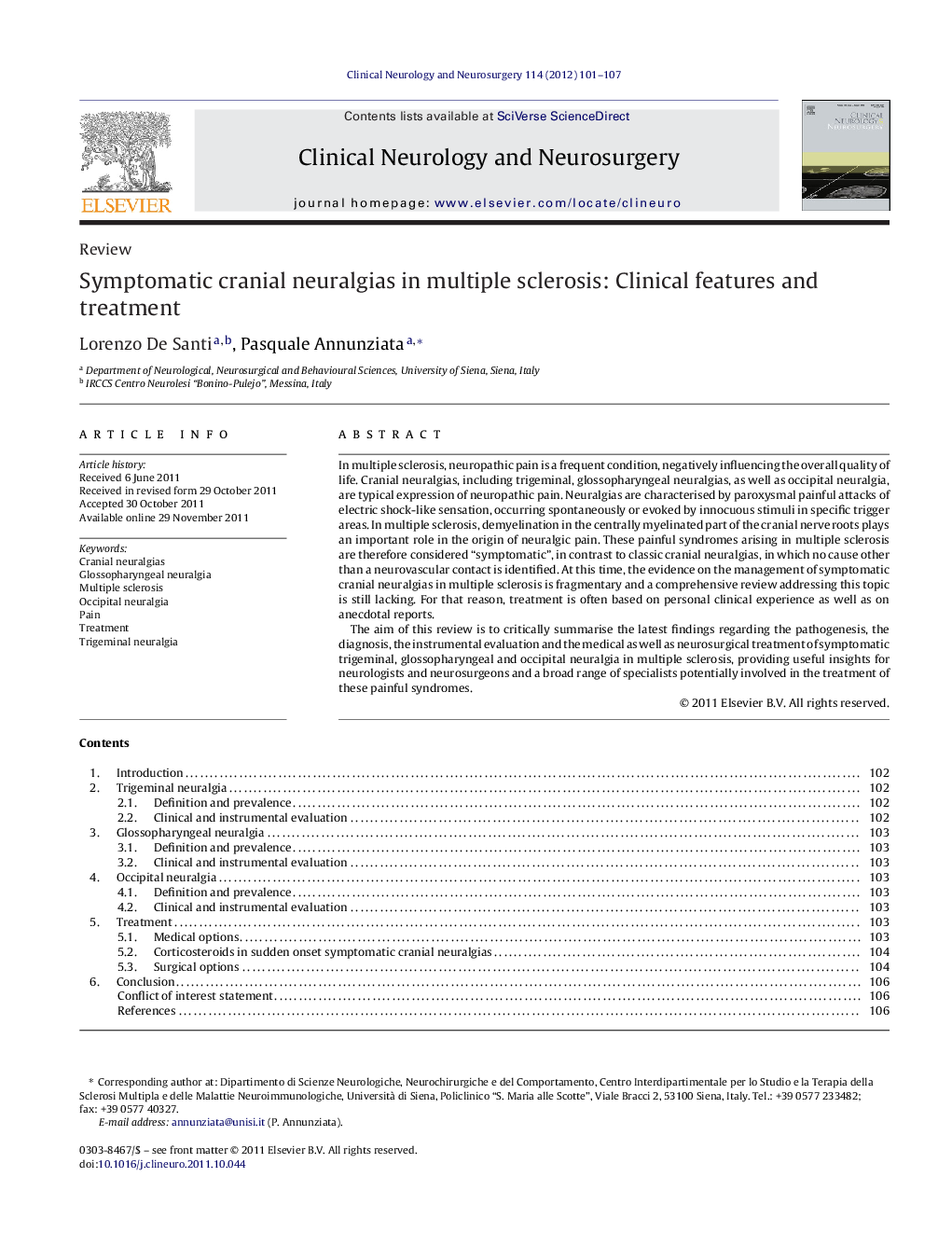| Article ID | Journal | Published Year | Pages | File Type |
|---|---|---|---|---|
| 3040923 | Clinical Neurology and Neurosurgery | 2012 | 7 Pages |
In multiple sclerosis, neuropathic pain is a frequent condition, negatively influencing the overall quality of life. Cranial neuralgias, including trigeminal, glossopharyngeal neuralgias, as well as occipital neuralgia, are typical expression of neuropathic pain. Neuralgias are characterised by paroxysmal painful attacks of electric shock-like sensation, occurring spontaneously or evoked by innocuous stimuli in specific trigger areas. In multiple sclerosis, demyelination in the centrally myelinated part of the cranial nerve roots plays an important role in the origin of neuralgic pain. These painful syndromes arising in multiple sclerosis are therefore considered “symptomatic”, in contrast to classic cranial neuralgias, in which no cause other than a neurovascular contact is identified. At this time, the evidence on the management of symptomatic cranial neuralgias in multiple sclerosis is fragmentary and a comprehensive review addressing this topic is still lacking. For that reason, treatment is often based on personal clinical experience as well as on anecdotal reports.The aim of this review is to critically summarise the latest findings regarding the pathogenesis, the diagnosis, the instrumental evaluation and the medical as well as neurosurgical treatment of symptomatic trigeminal, glossopharyngeal and occipital neuralgia in multiple sclerosis, providing useful insights for neurologists and neurosurgeons and a broad range of specialists potentially involved in the treatment of these painful syndromes.
